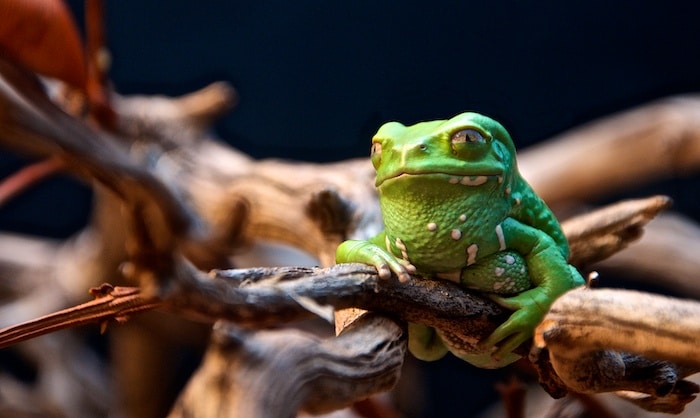Doing a lot of my bottle photography in studio, controlling light becomes something I have not only grown accustomed to, but actually spoiled by. Shooting in the big outside world full of light I cannot control always makes for a different approach.
We were at the California Academy of Sciences with my sister Malinda and her new husband, Peter. Needless to say, there were lots of things to see and, therefore, lots of things to photograph. But most of what they had was behind glass or underwater—or both, so taking pictures was a bit more of a challenge and, the coolest things there were off-limits to photography.
But not this little guy. I wanted to shoot this frog, but the lighting wasn’t great, I didn’t have my tripod, AND he was behind front-lit glass. What to do? Most folks who were shooting him were using point and shoot cameras or camera phones which, upon metering the scene, dutifully engaged their flashed when the shutter release was pressed. Not always a bad thing, but almost always a bad thing when shooting something behind glass—the flash reflects off of the glass and makes for a decidedly bad and amateurish picture.
What to do? I had to hand-hold, and flash was out of the question—even if I had brought my speedlight to try to side-light the frog, it still would have been a challenge to say the least. Using my normal settings I was looking at a shutter speed of around 1/15 second—too slow to handhold and hope to get any sharp images. Thank god for high ISO. I bumped my ISO up to 640, which gave me a marginally better 1/30 of a second. All I had to do was take a deep breath, exhale, compost the shoot, and fire of several frames. As I knew, one was perfectly sharp. Not as ideal as lighting it and/or using a tripod, but new cameras these days can truly do some amazing things!
